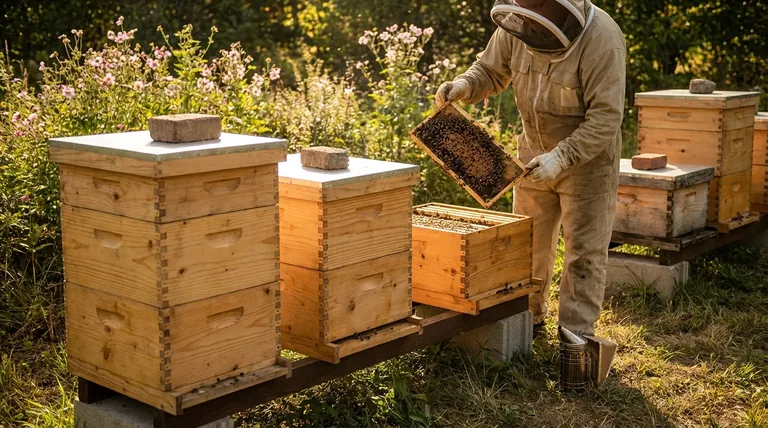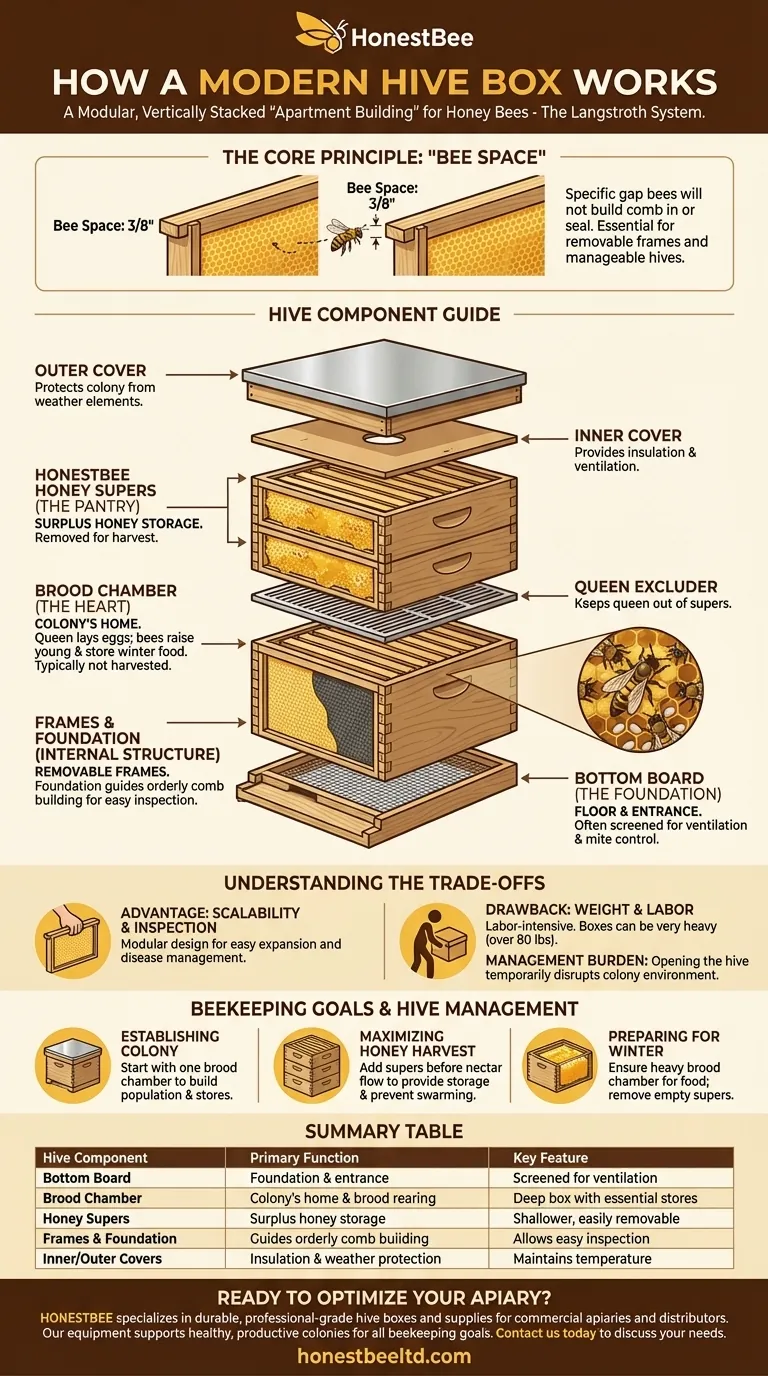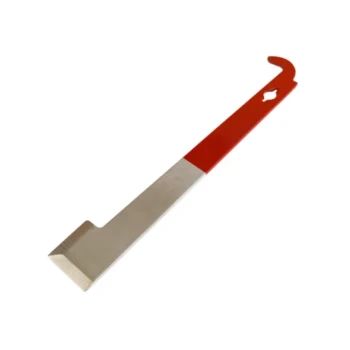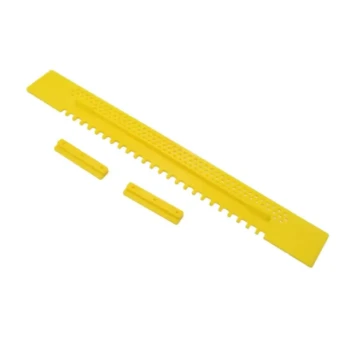At its core, a modern hive box is a modular, vertically stacked apartment building for honey bees. This design, known as the Langstroth hive, is engineered to give the bee colony a secure place to live and raise its young while allowing a beekeeper to easily inspect the hive and harvest surplus honey without harming the colony's essential resources.
The hive box is not just a container; it's a carefully designed system that separates the bees' living quarters (the brood chamber) from the surplus honey storage (the supers), making modern beekeeping possible.

The Core Principle: "Bee Space"
The genius behind the modern hive box is a concept called "bee space." This refers to a specific gap, approximately 3/8 of an inch (9.5mm), that bees will neither build comb in nor seal with propolis (a resinous "bee glue").
Every component inside a Langstroth hive is built around maintaining this precise spacing. It allows bees to move freely while keeping the frames from being permanently glued together. This one principle is what makes the frames removable and the hive manageable.
Deconstructing the Hive: A Component-by-Component Guide
A hive is assembled vertically, with each box serving a distinct purpose. Understanding the function of each part reveals how the system works as a whole.
The Foundation: Bottom Board
The entire hive rests on a bottom board, which serves as the floor and front porch. It provides an entrance for the bees to come and go. Many modern bottom boards are screened for ventilation and to help control Varroa mite populations.
The Heart of the Colony: The Brood Chamber
This is the component mentioned in your initial research. The brood chamber (or "hive body") is the large, deep box at the bottom of the stack. It is the colony's home.
Inside, the queen bee lays her eggs in the wax comb built on the frames. This is where the colony raises its young (the brood) and stores the pollen and honey it needs to survive the winter. For the health of the hive, a beekeeper typically does not harvest honey from this box.
The Pantry: Honey Supers
Honey supers are smaller, shallower boxes placed on top of the brood chamber. As the colony thrives and gathers more nectar than it needs for its immediate survival, it will begin storing this surplus honey in the supers.
Because bees naturally store honey above their brood nest, this creates a perfect separation. The beekeeper can add or remove these boxes as needed and harvest honey from them knowing the colony's essential food stores in the brood chamber remain untouched. A queen excluder, a screen with specific-sized gaps, is often placed between the brood chamber and the supers to prevent the larger queen from laying eggs in the honey-harvesting area.
The Internal Structure: Frames and Foundation
Each box—brood chamber and super alike—is filled with removable frames. These frames typically hold a sheet of foundation, which is a thin sheet of beeswax or plastic imprinted with the hexagonal shape of honeycomb.
This foundation guides the bees, encouraging them to build straight, orderly comb within the frames. This structure is what makes hive inspections possible, as the beekeeper can lift out individual frames to check on the queen, look for signs of disease, and assess honey stores.
The Roof System: Inner and Outer Covers
Finally, an inner cover sits on top of the uppermost box. It provides dead air space for insulation and has a notch for upper ventilation or feeding.
The outer cover is the hive's telescoping roof, protecting the entire colony from rain, snow, and sun.
Understanding the Trade-offs
The Langstroth system is dominant for a reason, but it's important to understand its practical implications.
The Key Advantage: Scalability and Inspection
The modular design is the system's greatest strength. You can easily expand a hive for a strong honey flow or reduce it to help a small colony stay warm. The ability to remove frames makes disease management and colony assessment incredibly efficient.
The Primary Drawback: Weight and Labor
The system is labor-intensive. A single deep brood chamber can weigh over 80 pounds, and a full honey super can easily exceed 40 pounds. Lifting and manipulating these heavy boxes is a physical challenge.
The Management Burden: Potential for Disturbance
While designed for inspection, opening the hive is a disturbance. It breaks propolis seals the bees have made and can temporarily disrupt the colony's temperature and humidity regulation. A good beekeeper learns to be efficient and inspect only when necessary.
How This Applies to Beekeeping Goals
Your approach to managing a hive box will depend entirely on your objective at a given time of year.
- If your primary focus is establishing a new colony: You will start with just a single brood chamber, allowing the bees to build their population and food stores before adding any honey supers.
- If your primary focus is maximizing honey harvest: You will add honey supers just before a major nectar flow to provide ample storage space and prevent the colony from becoming "honey bound" and deciding to swarm.
- If your primary focus is preparing a colony for winter: You will ensure the brood chamber(s) are heavy with honey for the bees' own use and remove all the empty honey supers to reduce the space the bees must keep warm.
Ultimately, the hive box is a tool that facilitates a partnership between the beekeeper and the bees, based on an understanding of their natural behavior.
Summary Table:
| Hive Component | Primary Function | Key Feature |
|---|---|---|
| Bottom Board | Foundation and entrance for the hive. | Screened for ventilation and mite control. |
| Brood Chamber | Home for the colony; queen lays eggs here. | Contains frames for brood and essential food stores. |
| Honey Supers | Storage for surplus honey harvest. | Placed above the brood chamber; easily removable. |
| Frames & Foundation | Guides bees to build orderly, removable comb. | Allows for easy hive inspection and management. |
| Inner/Outer Covers | Provides insulation and weather protection. | Maintains hive temperature and shields from elements. |
Ready to Optimize Your Apiary with Professional-Grade Equipment?
At HONESTBEE, we specialize in supplying durable, well-designed hive boxes and essential beekeeping supplies to commercial apiaries and equipment distributors. Our wholesale-focused operations ensure you get the reliable tools you need to support healthy, productive colonies—whether your goal is maximizing honey harvest, strengthening a new colony, or preparing for winter.
Contact us today to discuss your specific needs and discover how our equipment can enhance your beekeeping success.
Visual Guide

Related Products
- Langstroth Honey Bee Box Hive Boxes for Different Depths
- Australian Langstroth Beehive Boxes for Beekeeping Wholesales
- Langstroth Bee Hives Bee Keeping Box for Beginners Beekeeping
- Long Langstroth Style Horizontal Top Bar Hive for Wholesale
- Wholesales Dadant Size Wooden Bee Hives for Beekeeping
People Also Ask
- What are the sizes available for Langstroth boxes? A Guide to 8-Frame vs. 10-Frame & Depths
- How is checking honey supers in a Langstroth hive different from inspecting Honey Flow supers? A Guide to Disruptive vs. Non-Invasive Methods
- What is the best time to inspect a hive? Optimize for Bee and Beekeeper Safety
- What are the sizes of supers available in a standard hive? A Guide to Deep, Medium, and Shallow Boxes
- How deep is a medium bee box? Unlock the Key to a Versatile and Manageable Hive



















